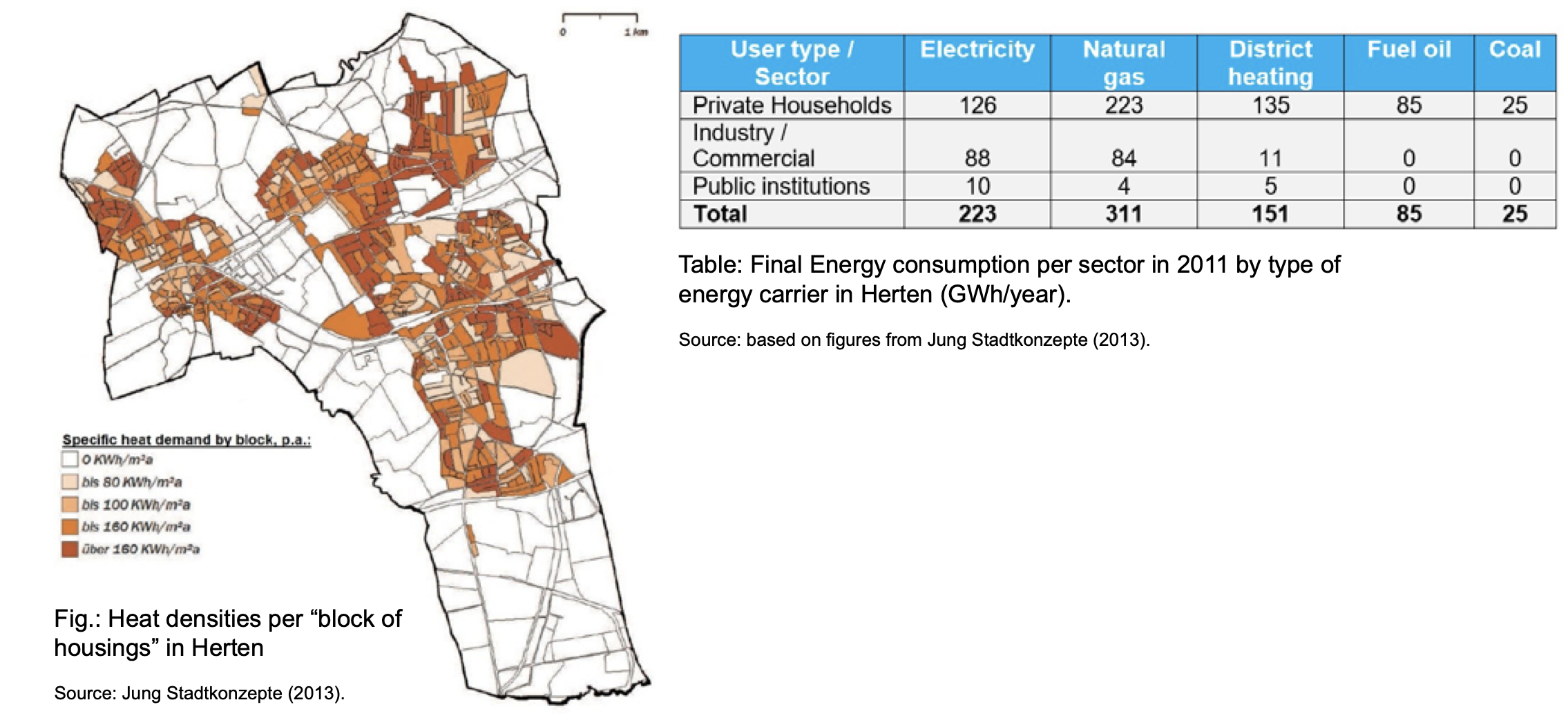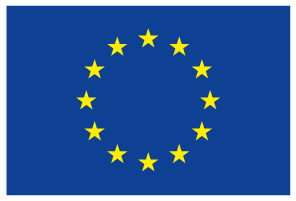Germany
2017
- Type : Project
- Size : Local community
- Area : Residential, Utility
Environmental benefit
Decarbonising district heating through solar thermal energy and heat pumps
Share
Germany
2017
- Type : Project
- Size : Local community
- Area : Residential, Utility
Environmental benefit
Discover this use case online

For the case study, it has been decided to generate a possible new mix of supply units for the three largest sub- systems (Innenstadt, Schieferfeld and Kuhstrasse).
For the new mix of generation units, two technologies have been analysed: solar thermal fields with flat plate collectors and possible heat (pit) storage, and ground source heat pumps (brine to water).
Results from scenarios and policy assessment
Scenario 1: No renovation
• Replacement of the existing heat generators based on the current policies
• No renovation of existing buildings
• District heating network remains supplied by the existing coal-fired CHP units.
Scenario 2: Renovation
• Continuation and intensification of the current policies
• Renovation rate 2015-2030 for single-family homes and multi-family homes is respectively of 2.4% and 1.1%. Renovation rate 2031-2050 is on average of 1%.
• District heating network remains supplied by the existing coal-fired CHP units.
Scenario 3: Renovation + Solar DH
• Energy demand decreases as in Scenario 2
• Integration of 32,000 m2 of solar thermal collector fields and 6,000 m3 thermal storage into different parts of the DH network.
Recommendations and possible solutions
In order to enable the transformation of the heating and cooling sector in Herten as assessed in the scenario analysis, a sound policy framework is needed at local and national level. Here, the focus is on policy recommendations at local level.
– Establishment of refurbishment hot spots integrated planning of retrofits and transformation of the district heating (DH) system to a low temperature system.
– Free connection to the DH network and replacement of old heating substations with new 4th generation DH units.
– Heat zoning with obligation to connect to DH.
– Designated area for solar district heating as part of the city urban planning.
– Using existing national financial support schemes for large RES systems.
Outlook and open questions
The roadmap for Herten is focused on the prospective development and decarbonisation of the DH network.
• 90% of the energy supply for the DH network should come from renewables or excess heat in 2050.
• The final energy supplied for residential heating (hot water and heating) by the DH system should have nearly the same amount in 2050 as in 2011 (approx.150 GWh/a).
 R-ACES has received funding from the European Union’s Horizon 2020 research and innovation programme under grant agreement N° 892429
R-ACES has received funding from the European Union’s Horizon 2020 research and innovation programme under grant agreement N° 892429
For the case study, it has been decided to generate a possible new mix of supply units for the three largest sub- systems (Innenstadt, Schieferfeld and Kuhstrasse).
For the new mix of generation units, two technologies have been analysed: solar thermal fields with flat plate collectors and possible heat (pit) storage, and ground source heat pumps (brine to water).
Results from scenarios and policy assessment
Scenario 1: No renovation
• Replacement of the existing heat generators based on the current policies
• No renovation of existing buildings
• District heating network remains supplied by the existing coal-fired CHP units.
Scenario 2: Renovation
• Continuation and intensification of the current policies
• Renovation rate 2015-2030 for single-family homes and multi-family homes is respectively of 2.4% and 1.1%. Renovation rate 2031-2050 is on average of 1%.
• District heating network remains supplied by the existing coal-fired CHP units.
Scenario 3: Renovation + Solar DH
• Energy demand decreases as in Scenario 2
• Integration of 32,000 m2 of solar thermal collector fields and 6,000 m3 thermal storage into different parts of the DH network.
Recommendations and possible solutions
In order to enable the transformation of the heating and cooling sector in Herten as assessed in the scenario analysis, a sound policy framework is needed at local and national level. Here, the focus is on policy recommendations at local level.
– Establishment of refurbishment hot spots integrated planning of retrofits and transformation of the district heating (DH) system to a low temperature system.
– Free connection to the DH network and replacement of old heating substations with new 4th generation DH units.
– Heat zoning with obligation to connect to DH.
– Designated area for solar district heating as part of the city urban planning.
– Using existing national financial support schemes for large RES systems.
Outlook and open questions
The roadmap for Herten is focused on the prospective development and decarbonisation of the DH network.
• 90% of the energy supply for the DH network should come from renewables or excess heat in 2050.
• The final energy supplied for residential heating (hot water and heating) by the DH system should have nearly the same amount in 2050 as in 2011 (approx.150 GWh/a).
